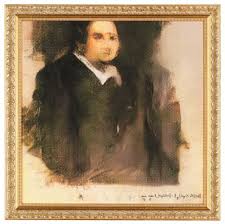“Behold the future—here it is.” What is it? « Back to Questions List
|
“Behold the future—here it is.” These are the words used by the auctioneer at Christie's before starting the bidding on “Edmond de Belamy”, a piece of artwork. Edmond de Belamy wrote its name in the books of history by becoming the first Artificial Intelligence (AI) generated artwork to be sold in a major auction. Artificial Intelligence is a branch of science that makes computers thinks like human being. Edmond de Belamy was created by French collective Obvious. They work on the principle of democratizing art by employing artificial intelligence. In AI, a computer learns through the principle of feedback theory. When the output of a system is routed back to itself as input, it is called a feedback. By repeatedly subjecting to feedbacks, the computer acquires intelligence to act based on the happenings in the surroundings. The artwork, Edmond de Belamy, was the result of hard work of three persons living together in a Parisian flat. They collectively describe themselves Obvious. One of the team members is a PhD student in machine learning. Before generating Edmond de Belamy, artist Pierre Fautrel, familiarized the computer programme with artwork by running 15,000 classic portraits through the computer software. Through these repeated feeding, the computer learned the rules of portraiture. The algorithm developed by Google researcher Ian Goodfellow was employed by them. Based on the learning, the computer generated a series of new images by itself. Obvious selected 11 among them under the "Belamy family," one of which was auctioned at Christie's in New York. Richard Lloyd, international head of prints and multiples at Christie's, persuaded Obvious to put the artwork on auction. Edmond de Belamy fetched $432,500, ten times the expected price. The AI generated Edmond de Belamy looks like the portrait of a gentleman dressed in black and framed in gold, resembling portraits of the 18th or 19th century. On a closer look, the face looks unclear and the picture incomplete. On the bottom right, the painting carries a mathematical formula, instead of artist’s signature.
The question whether Edmond de Belamy is an art has already arisen. Fautrel convinces the critics by stating that though the algorithm created the artwork, human beings decided to do the work, print it on canvas and put it in a gold frame. He also compared the present situation to that of early days of photography. During that period critics were not willing to consider it as an art and photography was blamed as destroyer of artists. The questions that remain unanswered are whether the algorithm is the artist and who owns the copy right. According to the artist, AI based painting is evolving at a rapid pace and artists who are techsavy will capture the emerging opportunity. What is Machine Learning (ML)?What is artificial intelligence? |

